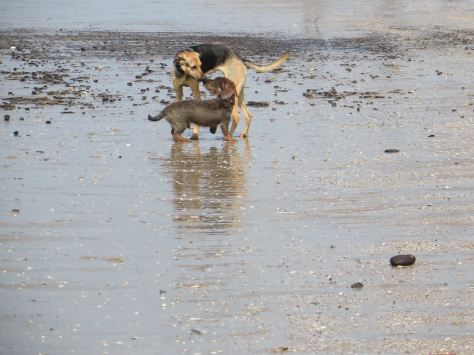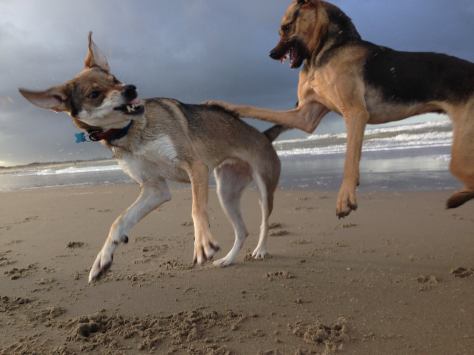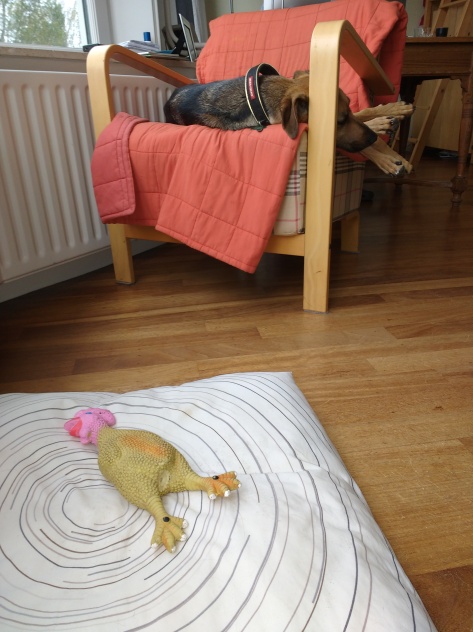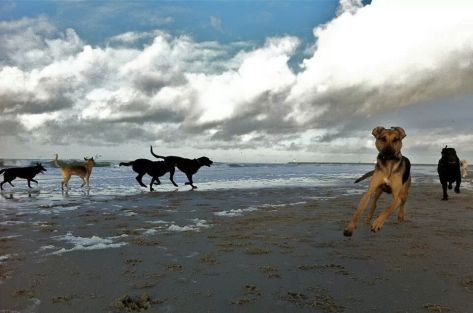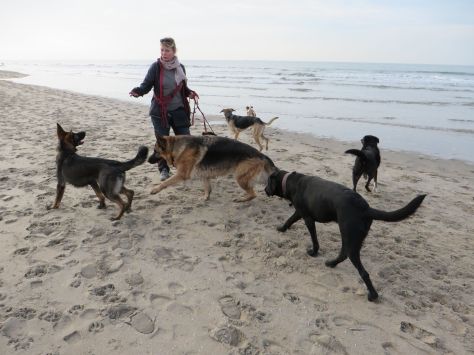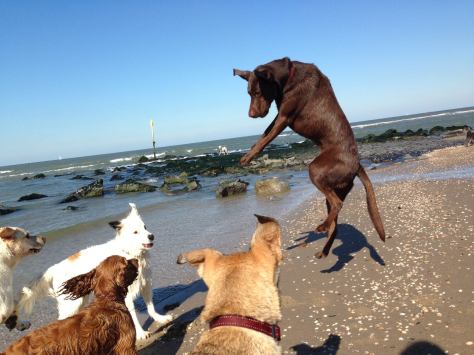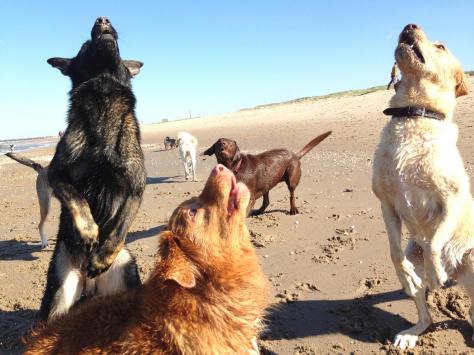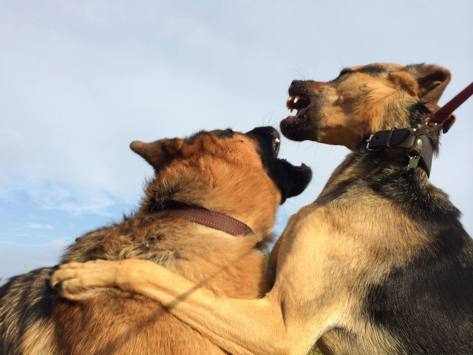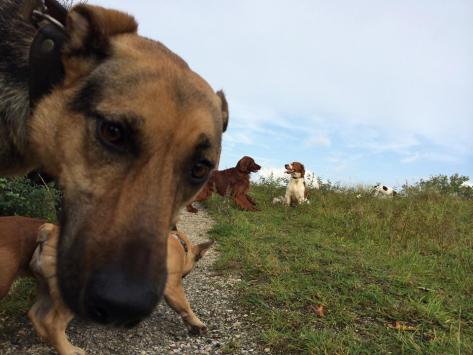In my last post I wrote about the benefits of having a tail. Some humans pointed out to me that I forgot to write about something that is typical for dogs and tails: wagging. Dogs wagging their tails are happy, those humans tell me.
I am sorry to spoil their idea, an idea that is shared by a lot of humans. It is a misconception. We are not always happy when we wag our tail. To be precise: tail wagging has nothing to do with happiness! When we wag our tails, it means we are agitated. Sometimes we are agitated because we sense something nice is going to happen (yummy food! squeaky ball!) and in a way you can say that we are happy then. But when we wag our tail it can also mean we are insecure, angry or even scared.
Is that confusing? Not to canines. We sense each others energy, we know what the other dog means. To humans it can be confusing, because they have not learned how to read our body language. I will give them a clue. Look at the position of our tail when we are wagging. Is the tail up high in the air and wagging fast, it means a dog is over exited. He is not happy, he can even become aggressive. One sees this often when dogs meet. His tail will be high, wagging fast and he will make his body look bigger, standing tense. Usually he will be very close to the other dog. Too close to my liking – when a dog approaches me like this I snap, because they do not respect my personal space. Usually snapping helps, especially with intrusive males.
If the tail is very low, wagging fast, it means a dog is over exited too. It is exited and a little scared, with a look on its face that means ‘ooooh I do love you and I know we will go and do something awesome but will you please tell me what it is because I am really insecure right now!’ Something like that. This dog is not truly happy and his wagging tail is showing exitement and insecurity.
Then there is the third position: a medium raised tail, wagging slowly. This means the dog is relaxed and yes, most of the time you can say she is happy. Usually you can see this with dogs that are walking leisurely, sniffing her and there, doing some quiet explorations.







